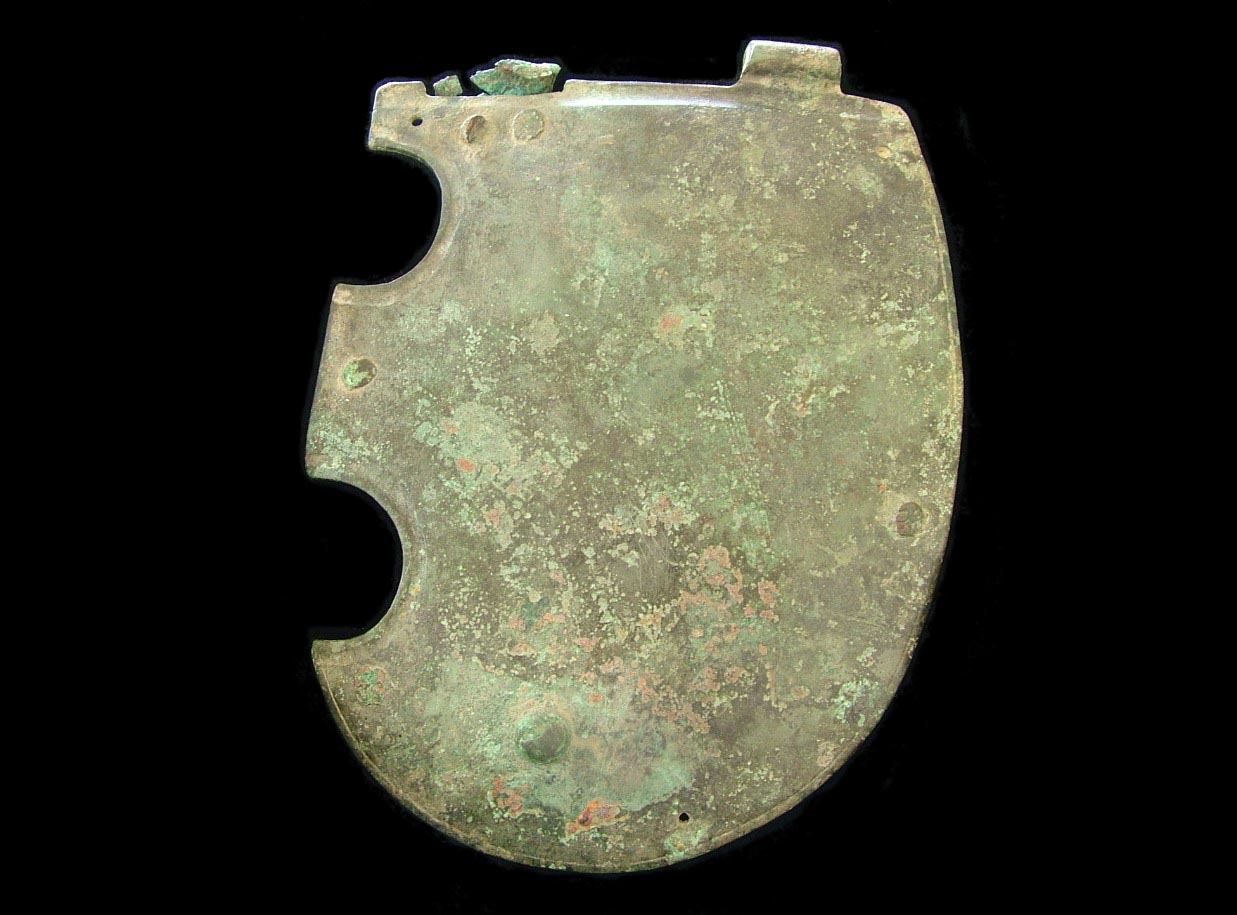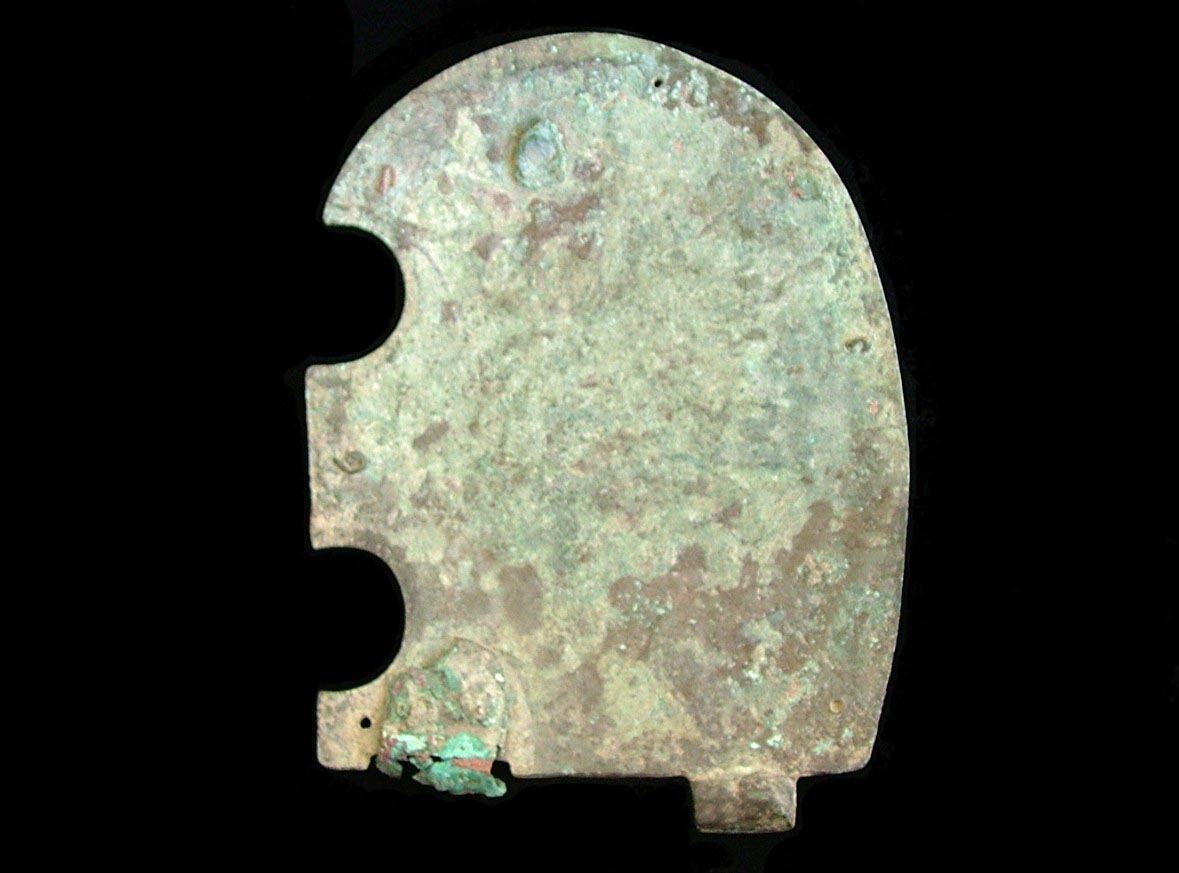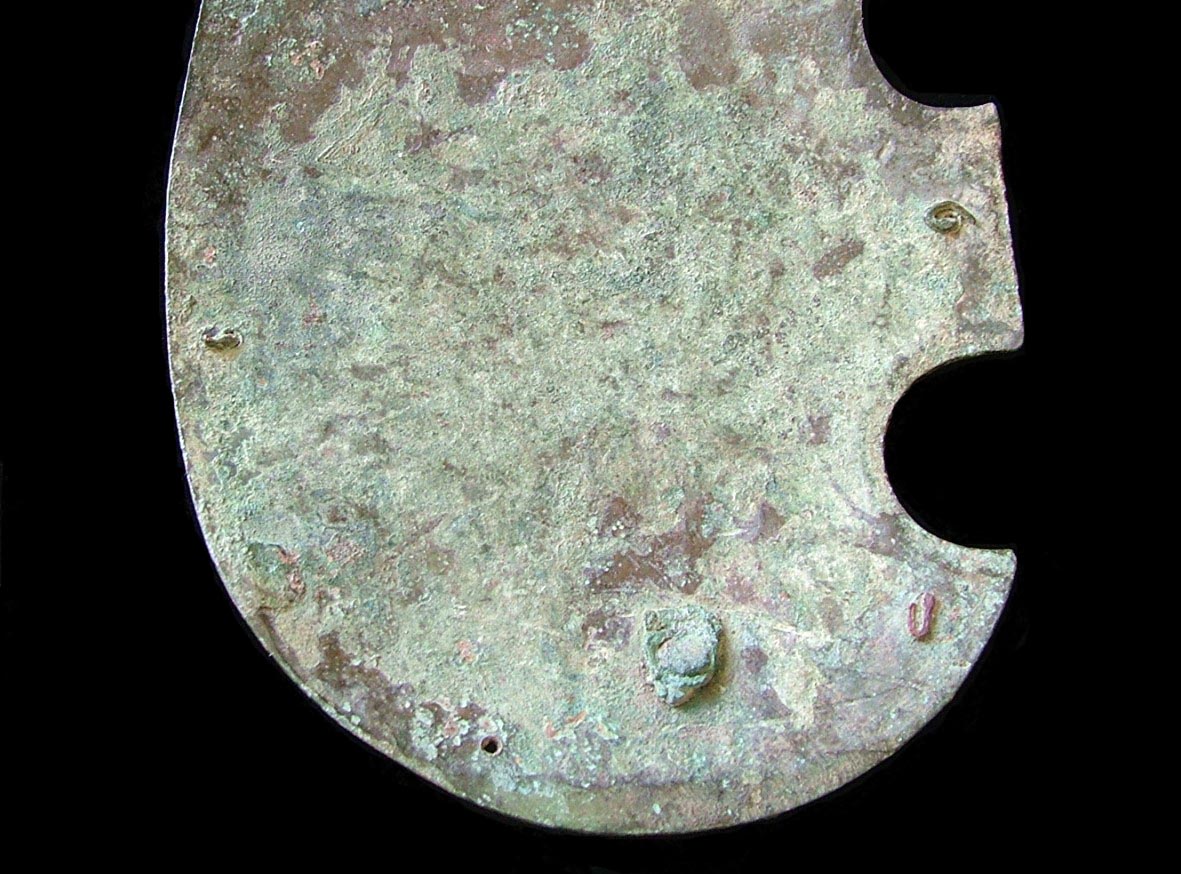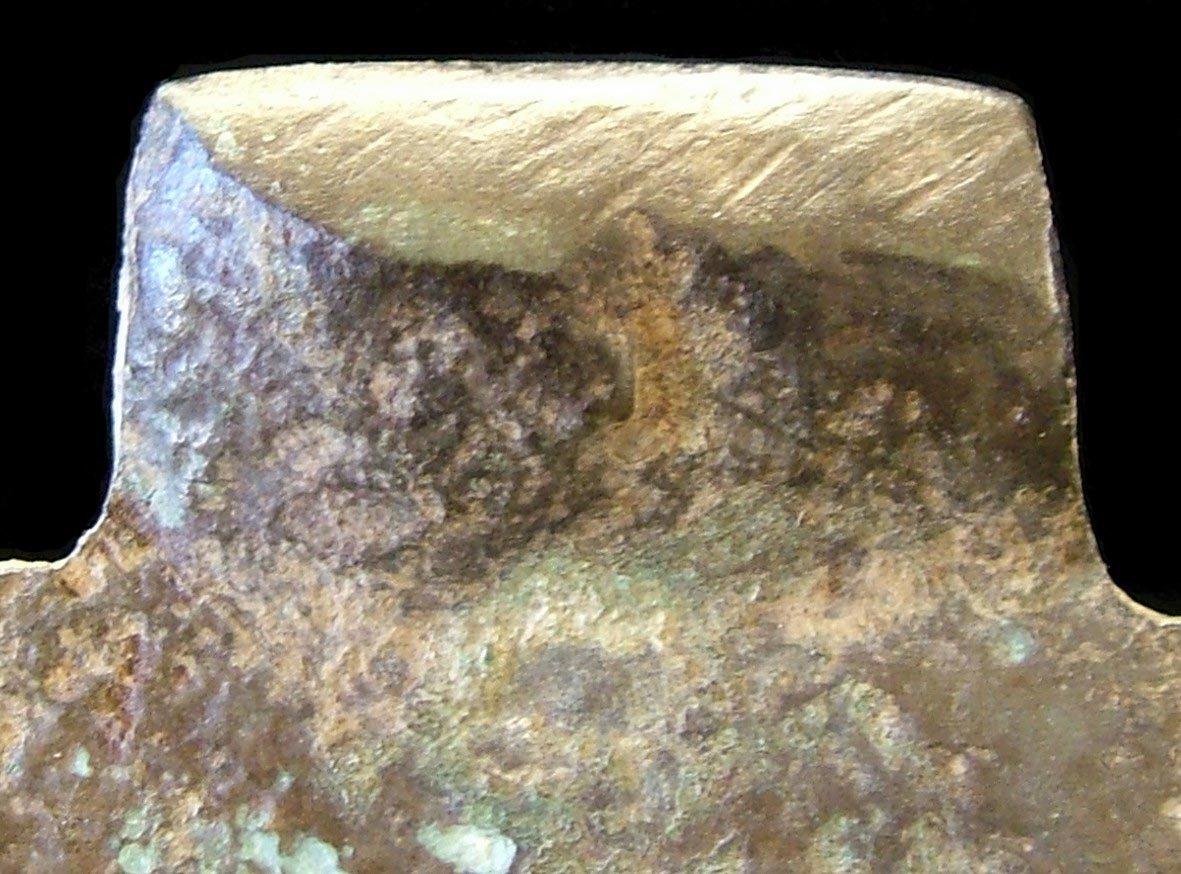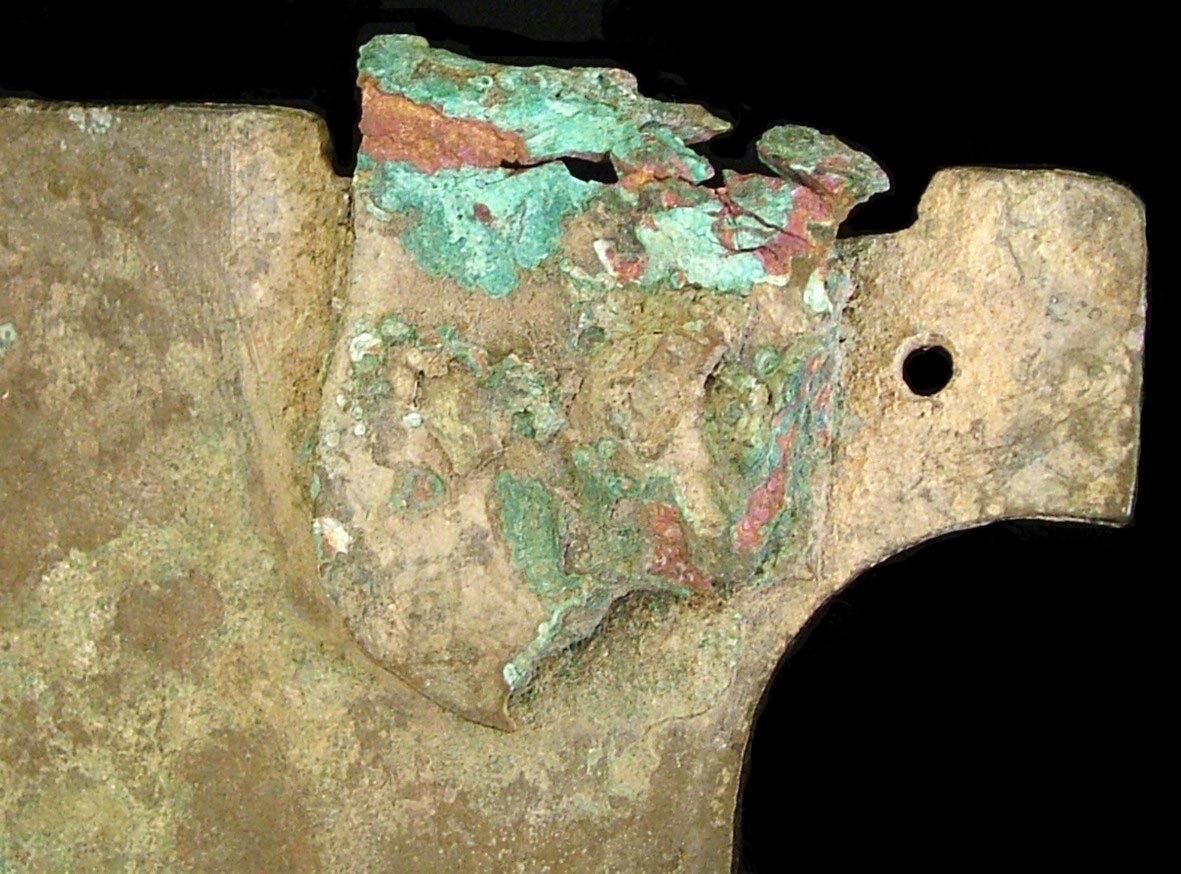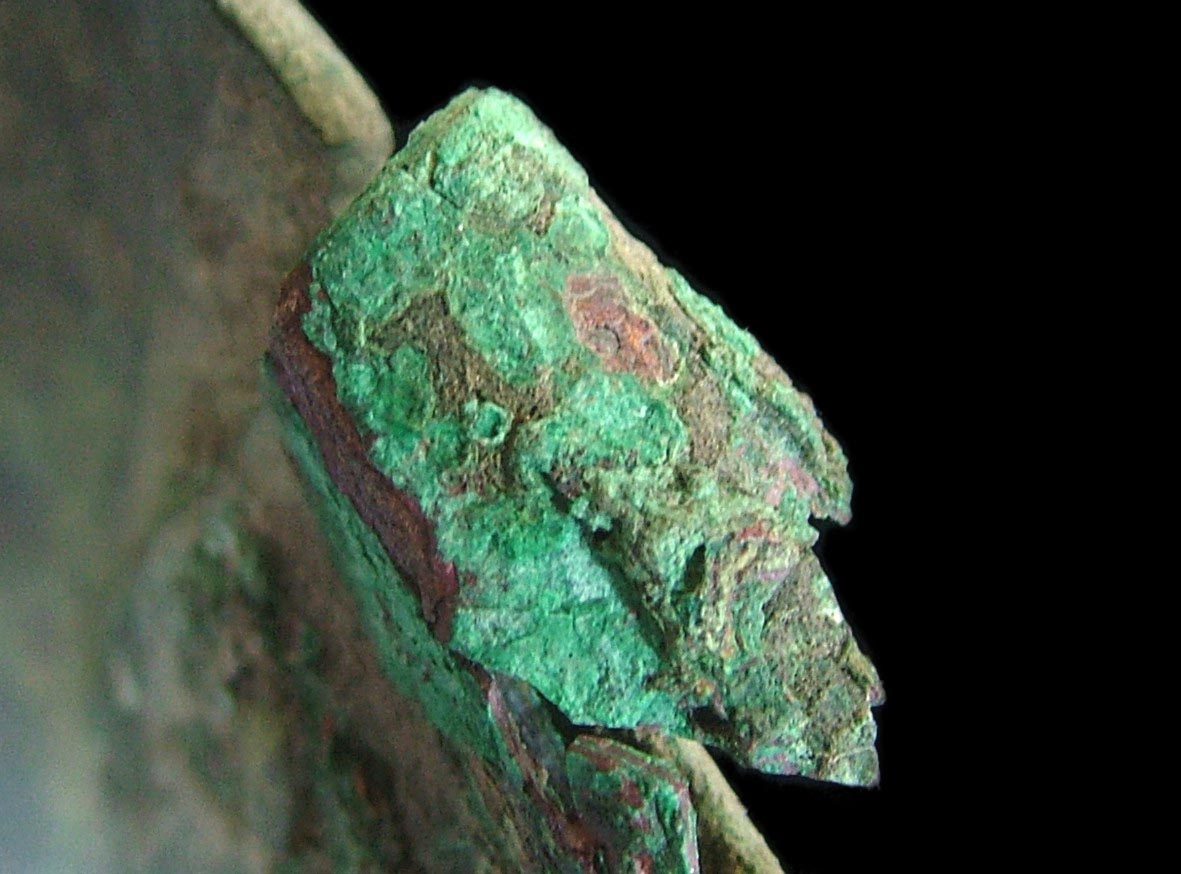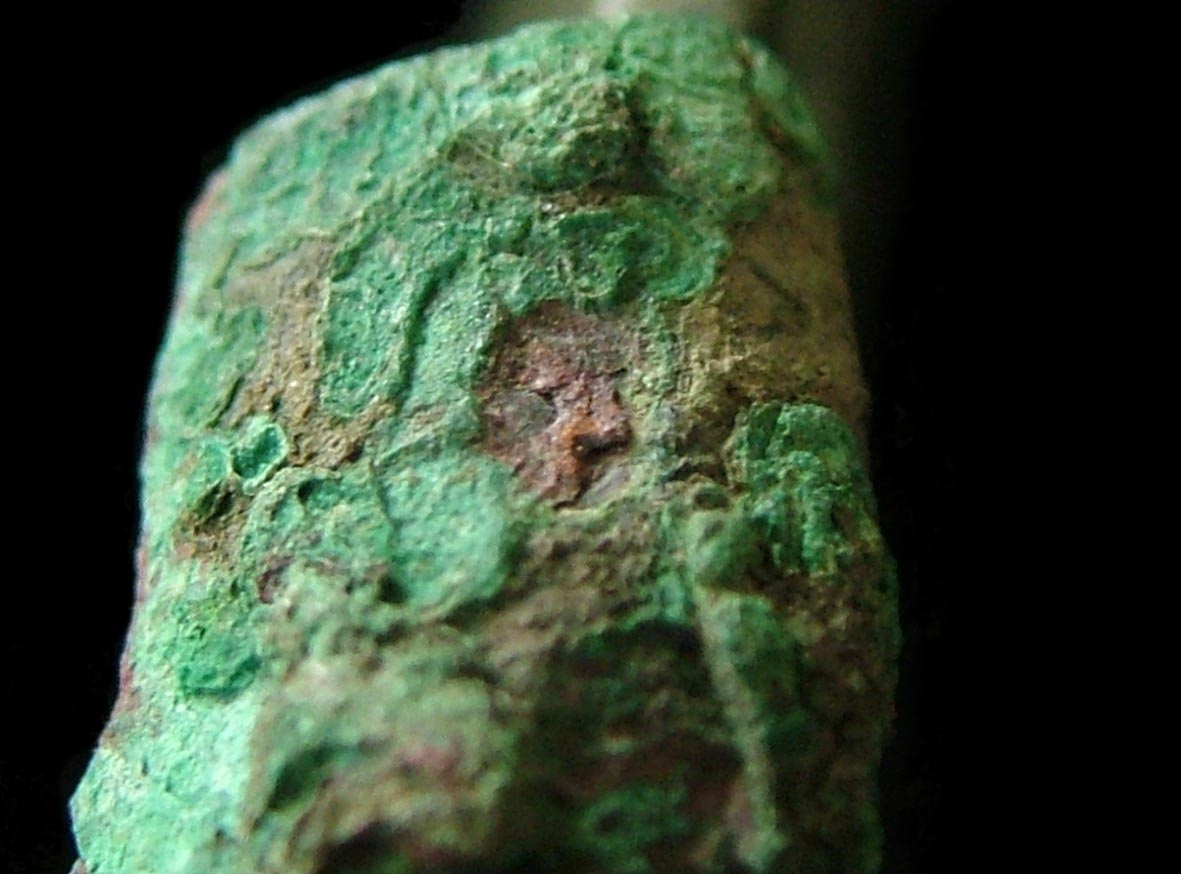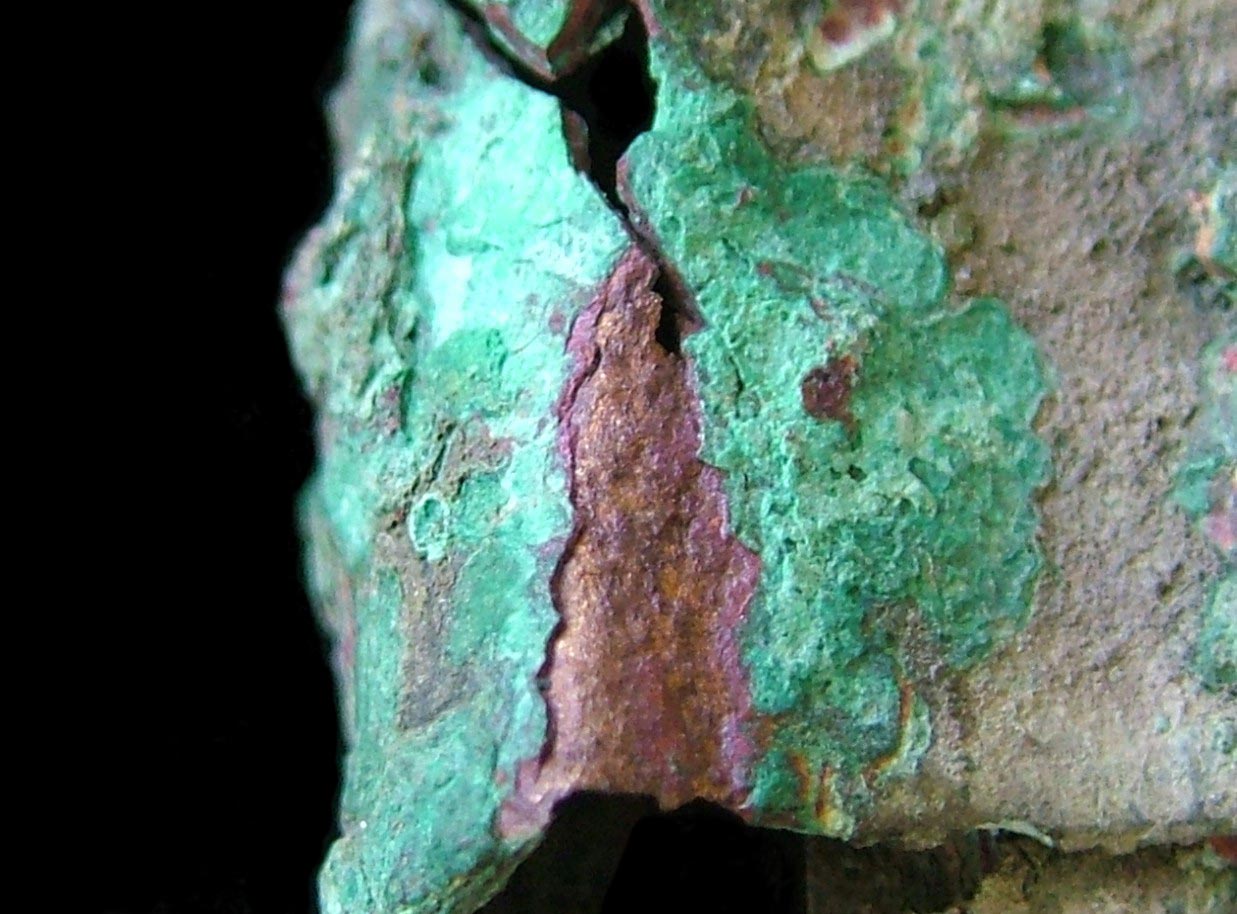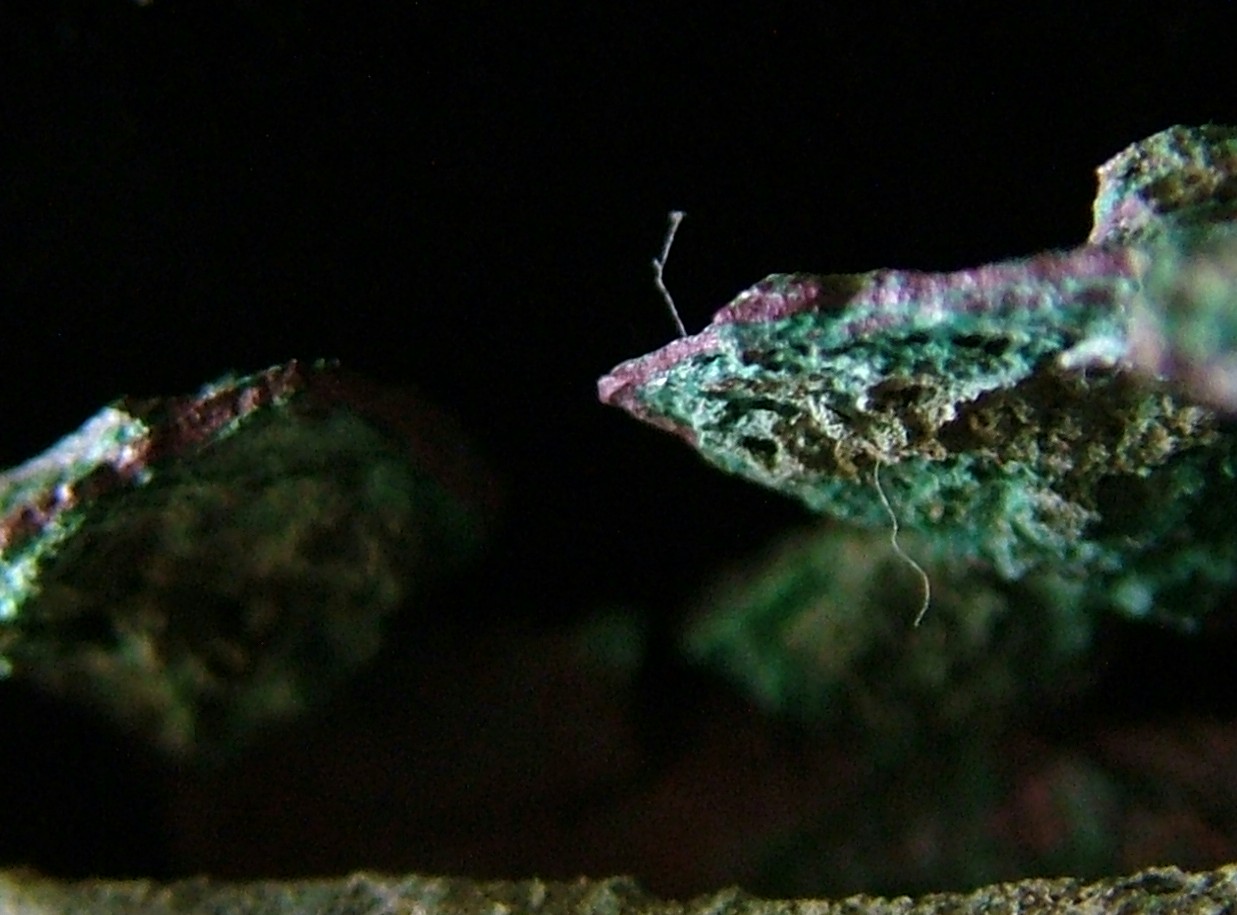 |
|---|
VOTIVE ART OF GERMANICUS'S FORCES AT THE TEUTOBURG BATTLE SITE C. 15 TO 16 AD. |
|
| AMBUSH OF ARMINIUS AGAINST VARUS AT THE BATTLE OF THE TEUTOBURG FOREST
|
|
| Some Of The Information On This Page Is Currently Being Updated. IF YOU WOULD LIKE TO VIEW THE MINIATURE MICRO ART OF THE XVII's AQUILA RIGHT AWAY, THEN GO TO THE LAST PICTURE GROUP ON THIS PAGE! The entire artifact has lead overlay with some tin alloy and perhaps small amounts of other unknown alloys. The art on the inside appears to have been made with charcoal, clay, bits of paint, metal tinting, resins, and perhaps isinglass (fish glue). The entire piece has a light coat of resin Some of the art style is somewhat typical with what is seen on other unscrubbed legionary artifacts. It is a mixture of graffiti type art and Roman grotesque that is abstracted and overlapped, some of the art has letters and, or numbers weaved in with the art. The art will transform when moved at different angles and positions. |
|
| PICTURE GROUP 2 |
|
| Information. |
|
| GERMANICUS'S FORCES VOTIVE ART OF THE LOSS OF THE XVII'S AQUILA AND STANDARD BEARERS |
|
| The primary theme seen with this group of pictures is of the loss of the Aquila and standards of the XVII and the horrific sacrificing of the standard bearers by ghoulish figures and Germanic tribesmen. Pictures 33 thru 35 shows that the piece has been sculpted to appear as a stylized eagle when in the upside down position. |
|
| PICTURE GROUP 4 |
|
| Information. |
|
| PICTURE GROUP 5 |
|
| Information. |
|
| BACK SWIVEL HINGE WITH ART OF THE EXCAVATION OR BURIAL OF THE REMAINS OF THE LEGIONARIES OF THE XVII
|
|
| This group of pictures shows a long barrow that may have been a hidden place where the Germanic tribesmen placed the bones of the XVII standard bearers. The hole on one side of the hinge shows what may have been the inside of the barrow or cave. Pictures 19 thru 21 shows bones and images of what must be standard bearers or legionaries of note over what appears to be a burial pit. The figure nearest and to the left of the pit is wearing a legionary helmet and facing to the right, with this there is a dog (that appears to be a mastiff) looking over it's shoulder to the right, the dog is as if coming from the pit and part of the legionary. |
|
| REMNANTS OF ATTACHED FRONT SWIVEL HINGE WITH ART OF A MAP OF SYMBOLS OF THE BATTLEFIELD AND THE TAKING OF THE HELMETED HEAD OF VARUS |
|
| This group of pictures shows that the front remenants of an attached swivel hinge has various art done in relief and drawings done with charcoal, it appears to be a map of a battlefield, in my opinion it "may" contain important information for contemporary archeological study. Then there are figures on the hinge itself. With other pictures there is a grotesque figure behind a stag that is as if riding it and taking it's antlers. Under this is a head in a Roman Attic helmet facing to the right. Under the head is a battle axe and a basket that has various smaller figures, the basket also has smaller figures. I have no doubt that this is of Arminius taking of the head of Varus. Pictures 25 and 26 shows a cone shaped female figure with a small head that has two faces, one face is facing the viewer and the other to the right, she is holding a large circular face on her belly that appears to be male and there are also a couple of smaller male figures that face left. What is important to note is that this cone goddess is the only area of the cheek piece that has traces of gold gilding, it highly suggests a solar connect. When all this information is put together this should be the Germanic sun goddess Sunna. It suggests that she is in fact not the sun itself but rather that she is the bearer of a male sun god, but in two aspects (as in sisters, perhaps as goddesses of the dawn and setting sun). The fact that the male faced solar god is on the duel goddesses' belly suggests that she is constantly pregnant with the sun. Although it does not seem possible this same theme can be seen with art on several artifacts that are from Battenberg in the west of Germany, all the artifacts were scientifically dated to be a mere 600,000 years old. This may give at least some idea as to what the legionaries in the early 1st C. AD were facing when they went to conquer Germania. Although I have not researched this I am going to expect that the Varus march was the first attempt at a large incursion into the "heartland" of Germania. |
|
| ART OF GERMANIC GOD'S HEAD WITH BATTERED SHIELD AND BROKEN SWORD TIP OF VARUS |
|
| Pictures 1 thru 5 shows a large grotesque head of what may be a Germanic tree or tree stump god, or a wood god, or a vegetation god, (most likely all these), there is a sword tip and with Pictures 1 and 2 it is also a sword chape*, so there is a hint of a sword god. All this may suggest a Germanic god of trees or a tree stump or wood associated with vegetation and war. There is also a hint of a barrel that part of it could also be seen as a cup. Pictures 6 thru 20 shows the broken shield of Varus, the slightly bowed rectangular shield can be seen, in some of these pictures a profile of the head of Varus (similar to what is seen on his coinage) can be seen in the shield boss. Pictures 21 thru 26 shows when this area is seen on it's side it appears as a large figure holding a fierce looking dog facing to the right. Picture 27 shows the dog transformed into a pig. Pictures 28 thru 31 shows the area of the shield boss with it's micro art. With this there is a small gray stone with inscriptions on it. *A decorated broken sword tip as a battle trophy and, or as a votive to a war god is a fact as I own one. The artifact appears to have belonged to a Germanic or Germano-Sarmatian Roman auxiliary and "may" have a connection to a gladiatorial match. |
|
| ART OF THE SHIELD BOSS OF VARUIS WITH INSCRIPTIONS OF A PROPHECY |
|
| This group of pictures shows the micro art on the shield boss. Among many other things in some pictures the inscription "MAR", "VAR" and "VAT" can be seen this should stand for the Mars, Varus and vaticinum (prophecy). Over these letters there is a figure facing the viewer as is leaning forward placing something or someone near the inscription. To the left and under this are two busts of figures and a small standing figure that has a cape or wings (most likely a man, a woman, and possibly the Roman dawn goddess Aurora or a spirit ) that are holding a staff that is also part of the outline of a large head in a Roman Attic helmet facing to the right. In various pictures the top of the staff has a ram's/ lion's head facing to the left, they are on a large fish facing to the right. Pictures 14 thru 17 also shows a scroll near the middle and bottom of the staff. Pictures 14 and 15 shows that near the bottom of the shield there are figures over a large lioness. The rest of the pictures show the lioness transformed to a bear and with a helmeted figure overhead. Although it is still speculative according to the symbolism just mentioned it appears that the Romans "may" have associated the Varus disaster with a prophecy concerning Varus's conduct while Governor of Syria from 7 (or 6) to 4 BC with celestial events and astrological symbolism, and possibly something considered an offense to the god Mars. If so then this most likely would have been connected to the passing of the age of Aries (Mars) to the age of Pieces. |
|
| ART OF THE GERMANIC SUN GODDESS SUNNA |
|
| This group of pictures shows a slightly different viewing with the art on the area of the goddess Sunna, and also that area seen in other positions. From this it would appear that Sunna was also associated with a male fire god. |
|
| 1.2 MM SCULPTURE WITH A 0.35 MM AQUILA OF THE XVII CLASSICA VICTRIX |
|
| This group of pictures shows a micro sculpture made of an unknown somewhat transparent white pliable material that is on the tip of Varus's broken sword, it is an astounding 1.2 mm in length. Although the sculpture will transform when moved it is in it's primary position (on the inside of the cheek piece) it shows a long leafless tree or perhaps a flower or plant stem on a rock that is part of or holding the Aquila (Eagle) of the XVII Classica Victrix. The tree has long branch type roots that may also be a tree. The Aquila itself is a brilliant golden hue, that is even though it is not possible to attain that hue in photographs. There are several other micro strands that are made from the same material on the hinge, so this hints that the Aquila seen may be associated with the other world, perhaps Elysium. Pictures 1 thru 7 show the area where the Aquila is, that is even though it cannot be seen. There are various figures in high relief, one of these is very large and appears to be the head of a Germanic raptor creature. Pictures 8 thru 12 shows the primary position in which the Aquila can be seen. Pictures 13 thru 21 shows the Aquila, the tree or plant or flower stem has an outline of the bind letters "CS" (Classica, although this very well could also be for Caesar) and "VIC" (Victrix). The rest of the pictures with this group are of the sculpture when seen from the front of the cheek piece. With this Pictures 31 and 32 shows that the Aquila has transformed into a nail or a spike. Pictures 26 and 27 shows that the nail is now a trumpet. Pictures 28 thru 33 shows that the trumpet is now a flower but at an even more micro level (that can barely be seen even with more magnification) it shows a walking figure in a veil with long robe and holding something, that something appears to be a child. When in this position the overall form shows an outline of the bind letters "CLS" , this should stand for Legio (Legion) Classica or just plain Classica. Picture 34 itself shows to the area on the far right a bearded man's head and an eagle's head, the eagle beak is also a jumping dolphin that has a tail that is a type of feather fan, there are smaller figure's and one that is part of the man's heard perched as if on a cliff. The bearded man may be Neptune but possibly in connection or competition to Jupiter. Pictures 34 thru 40 shows that the flower has transformed into a figure holding a club horizontally on his shoulders, no doubt it is Hercules but yet it is also appears as a figure crucified on a "T" cross. If all the symbolism is put together with this micro sculpture as in the; Aquila, leafless tree, nail, trumpet, flower, what may be a woman and child, and Hercules with his club, then Hercules on a "T" cross then I expect that this is of a ancient mystery to do with the Hercules and the water cup compass/magnetic north, but it is also likely that there is more to this. Some of the themes seen here can also seen with the mid 1st C. AD Judea Capta artifacts listed on the home page. When the info. with all these artifacts are put together I think that there is enough evidence to speculate that in the 1st C. AD a mystery of Hercules and his water cup compass may have been confused by some with the mystery of the Christian crucifixion. Shortly I will post a list of those artifacts and any similar symbolism. Copyright 2011 David Xavier Kenney |
|
| CAPTURE OF THE AQUILA'S OF XVIII AND XIX WITH VOTIVE TO AQUILA XVII
|
|
| Information. |
|

